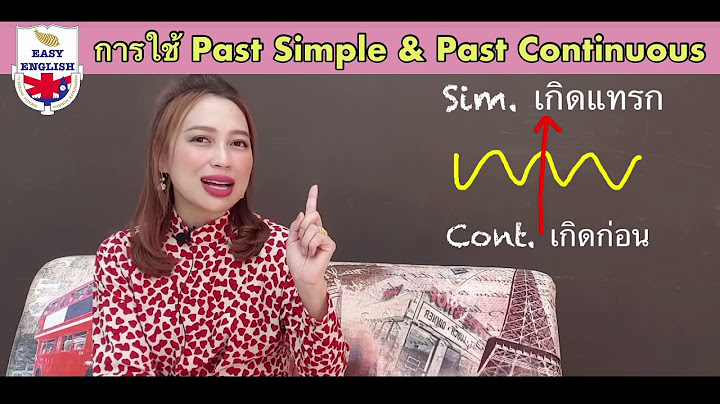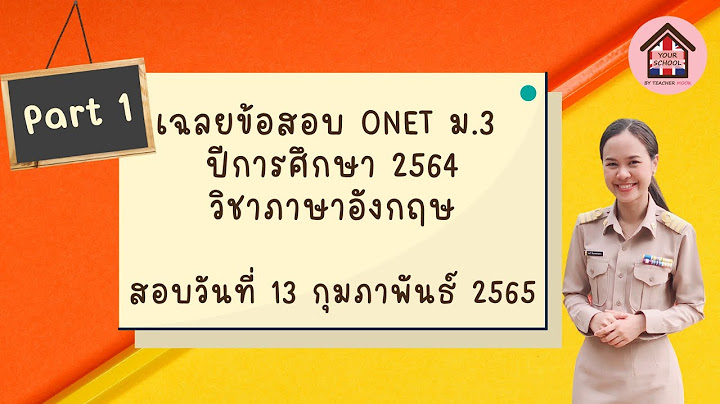การใช้งาน : Present Simple Tense จะใช้สำหรับเหตุการณ์ในปัจจุบัน , เหตุการณ์ที่เป็นจริงเสมอ และเหตุการณ์ที่เกิดขึ้นเป็นประจำ Show
**V.1 หรือ คำกริยาช่องที่ 1 (เติม s/es) จะมีหลักการดังนี้ คำกริยาทั่วไปสามารถเติม s ได้เลย pick ➝ pick prepare ➝ prepares find ➝ finds คำกริยาที่ลงท้ายด้วย s, sh, ch, x, o, และ z pass (ผ่าน) ➝ passes wish (หวัง) ➝ wishes touch (สัมผัส) ➝ touches fix (ซ่อมแซม) ➝ fixes do (ทำ) ➝ does คำกริยาที่ลงท้ายด้วย y และหน้า y เป็นพยัญชนะ ให้เปลี่ยน y ➝ i แล้วเติม es cry (ร้องไห้) ➝ cries try (ลอง) ➝ tries คำกริยาที่ลงท้ายด้วย y และหน้า y เป็นสระ (a, e, i, o, u) เติม s ได้เลย Stay (อยู่) ➝ stays ✿เรียนภาษาอังกฤษด้วยตัวเอง เก่งครบ 4 สกิล!✿ 2. Present Continuos Tense (เกิดอยู่ กำลังทำ)โครงสร้าง บอกเล่า : Subject + is / am / are + V.ing ปฏิเสธ : Subject + is / am / are + not + V.ing คำถาม : Is/ Am/ Are + subject + V.ing? การใช้งาน: Present Continuous Tense ใช่สำหรับบอกเล่าเหตุการณ์ในปัจจุบันที่กำลังดำเนินอยู๋
3.Present Perfect Tense (ทำเสร็จแล้ว ทำนานแล้ว)โครงสร้าง บอกเล่า : Subject + has /have + V.3 ปฏิเสธ : Subject + has /have +not + V.3 คำถาม : Has/ Have +Subject + V.3 ? การใช้งาน: Present Perfect Tense บอกเเล่าเรื่องราวหรือเหตุการณ์ที่ทำเสร็จเเล้ว (เมื่อไม่นาน/ทำนานแล้ว)
4. Present Perfect Continuos Tense (เกิดมาเรื่อย ๆ อย่างต่อเนื่อง)โครงสร้าง บอกเล่า : Subject + has /have +been + V.ing. ปฏิเสธ : Subject + has /have +been + not + been + V.ing คำถาม : Has/ Have +Subject + been + V.ing? การใช้งาน: Present Perfect Continuos Tense ใช้เพื่อบอกเล่าเหตุการณ์ที่เกิดขึ้นตั้งเเต่ก่อน มาจนถึงปัจจุบันที่พูด เกิดต่อเนื่องมาเรื่อย ๆ ในภาษาอังกฤษ simple present tense คือ tense 1 ใน 4 ของ present tense ใช้เพื่ออธิบายสิ่งที่ทำจนเป็นนิสัย สถานการณ์ที่ไม่เปลี่ยนแปลง ความจริงทั่วไป และการจัดการที่ได้เตรียมการไว้แล้ว simple present tense มีโครงสร้างทางไวยากรณ์ที่ไม่ยุ่งยาก ใช้เพียงแค่คำกริยาธรรมดาเท่านั้น (เช่น I take, you take, we take, they take) และคำกริยาของประธานเอกพจน์บุรุษที่ 3 จะเติม s (เช่น he takes, she takes เป็นต้น) ทดสอบความรู้ของคุณ หลักการใช้ simple present tense
โปรดระวัง! จะไม่ใช้ simple present เพื่ออธิบายถึงสิ่งที่กำลังอยู่ ณ. ตอนนี้ ตัวอย่างเช่น
รูปแบบของ simple present tense ของคำกริยา to thinkประโยคบอกเล่า ประโยคคำถาม ประโยคปฏิเสธ I think Do I think? I do not think You think Do you think? You do not think He thinks Does he think? He does not think She thinks Does she think? She does not think It thinks Does it think? It does not think We think Do we think? We do not think. They think Do they think? They do not think. หมายเหตุใน simple present เมื่อประธานเป็นเอกพจน์บุรุษที่ 3
ตัวอย่างเช่น
ทดสอบความรู้ของคุณ |

กระทู้ที่เกี่ยวข้อง
การโฆษณา
ข่าวล่าสุด
2024 Fate stay night unlimited blade works ทำไม archer รอด
5 เดือนs ที่ผ่านมา . โดย LaboriousCondominiumผู้มีส่วนร่วม
การโฆษณา
ผู้มีอำนาจ
การโฆษณา
ถูกกฎหมาย
ช่วย

ลิขสิทธิ์ © 2024 th.ketiadaan Inc.




























